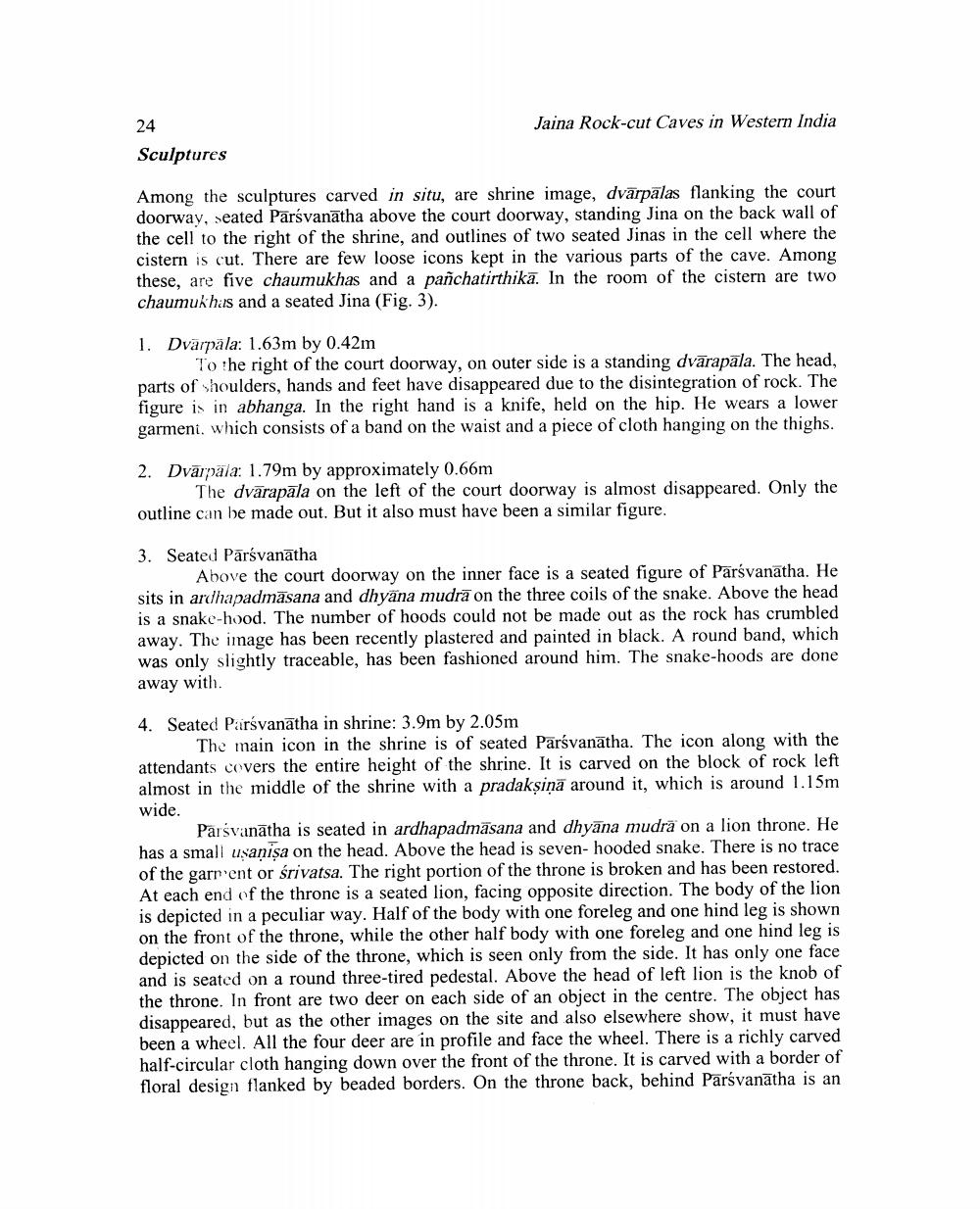________________
24
Jaina Rock-cut Caves in Western India
Sculptures
Among the sculptures carved in situ, are shrine image, dvarpālas flanking the court doorway, seated Parsvanatha above the court doorway, standing Jina on the back wall of the cell to the right of the shrine, and outlines of two seated Jinas in the cell where the cistern is cut. There are few loose icons kept in the various parts of the cave. Among these, are five chaumukhas and a pañchatirthika. In the room of the cistern are two chaumukhas and a seated Jina (Fig. 3).
1. Dvarpāla: 1.63m by 0.42m
To the right of the court doorway, on outer side is a standing dvarapala. The head, parts of shoulders, hands and feet have disappeared due to the disintegration of rock. The figure is in abhanga. In the right hand is a knife, held on the hip. He wears a lower garment, which consists of a band on the waist and a piece of cloth hanging on the thighs.
2. Dvärpäla: 1.79m by approximately 0.66m
The dvarapala on the left of the court doorway is almost disappeared. Only the outline can be made out. But it also must have been a similar figure.
3. Seated Parsvanatha
Above the court doorway on the inner face is a seated figure of Parsvanatha. He sits in ardhapadmasana and dhyana mudra on the three coils of the snake. Above the head is a snake-hood. The number of hoods could not be made out as the rock has crumbled away. The image has been recently plastered and painted in black. A round band, which was only slightly traceable, has been fashioned around him. The snake-hoods are done away with.
4. Seated Parsvanatha in shrine: 3.9m by 2.05m
The main icon in the shrine is of seated Parsvanatha. The icon along with the attendants covers the entire height of the shrine. It is carved on the block of rock left almost in the middle of the shrine with a pradakṣiņa around it, which is around 1.15m wide.
Parsvanatha is seated in ardhapadmasana and dhyana mudra on a lion throne. He has a small ușanisa on the head. Above the head is seven- hooded snake. There is no trace of the garment or śrivatsa. The right portion of the throne is broken and has been restored. At each end of the throne is a seated lion, facing opposite direction. The body of the lion is depicted in a peculiar way. Half of the body with one foreleg and one hind leg is shown on the front of the throne, while the other half body with one foreleg and one hind leg is depicted on the side of the throne, which is seen only from the side. It has only one face and is seated on a round three-tired pedestal. Above the head of left lion is the knob of the throne. In front are two deer on each side of an object in the centre. The object has disappeared, but as the other images on the site and also elsewhere show, it must have been a wheel. All the four deer are in profile and face the wheel. There is a richly carved half-circular cloth hanging down over the front of the throne. It is carved with a border of floral design flanked by beaded borders. On the throne back, behind Parsvanatha is an




